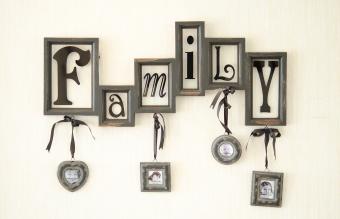
Buddha statues as decor have been growing more popular recently. They're favorite items for people who like spiritually-themed decor, and you'll find them in all sizes and materials. Many of the Buddha statues are in different poses, but do you know what they signify? Here are some of the most common types of Buddha statues and the meanings behind them.
Meditation Buddha

The Meditation Buddha is known as Amitabha, Buddha of Boundless Light. The statue depicts The Buddha in a sitting position known as a double or single lotus pose. Both hands are resting in his lap in the meditative position called the cosmic mudra. The overall profile of this pose creates a triangle shape that is meant to represent stability.
Is it okay to have a Buddha statue if you aren't Buddhist? Yes. Buddha is a symbol of peace, tranquility, and serenity for many non-Buddhists. Treat the image of this religious figure with the same respect you would other religious figures, such as a statue of Jesus.
Blessing Buddha

The Blessing Buddha and Protection Buddha statues hold the same pose but are used for different reasons in feng shui. The pose depicts Buddha bestowing blessings with his upper hand gesture of the right-hand palm facing out. This hand gesture is also used to dispel fear and is commonly viewed as a gesture of a shield. This is known as the mudra, Abhayamudra — or gesture of fearlessness. The pose is meant to give a feeling of reassurance and divine protection. The other hand rests in the Buddha's lap, open and facing upward as a gesture of compassion. Some depictions feature the other hand extended out in a gesture of comfort.
Teaching Buddha

The Teaching Buddha symbolizes wisdom, understanding, and fulfilling your destiny. Known as Dharma Chakra Buddha, the Teaching Buddha statue is in a sitting or standing position. The most popular is the sitting pose since this is the position the Buddha assumed when teaching. This is an important period in the Buddha's life. It symbolizes his sharing of the knowledge he gained during his enlightenment. In the statue pose, Buddha shares this knowledge with his disciples.
Since the Buddha's teachings came from his heart, both hands are positioned in front of his chest. The index fingers and thumbs touch to form a circle to represent his teaching of the Wheel of Dharma (union of wisdom and method). The other three fingers of both hands always remain extended.
Long-Life Buddha

DEA / G. DAGLI ORTI / Contributor / De Agostini / Getty Editorial Use Getty Images License - Getty Editorial Use Amitayus, Buddha of Long Life, sitting in meditation holding the vase of long life in his hand, bronze statue, Tibet | Getty Editorial Use
This Buddha sits or sometimes stands with the bag of blessings by his side, or he may hold the bag in his lap. In one hand, he cradles a wealth ball raised in front of him and a Ru-Yi pot in his other hand. As the name suggests, this Buddha symbolizes longevity.
Laughing Buddha is not actually a Buddha at all, but rather a Chinese monk called Hotei. These statues represent happniess, protection, and prosperity.
Happy Home Buddha

The seated or standing Happy Home Buddha holds a parasol over his shoulder. The white parasol or umbrella is said to be a goddess. The legend tells how she came out of Buddha's forehead. She is a protector against many of life's challenges, diseases, and various negative threats.
Earth Buddha

Also known as the Calling Earth to Witness, the Earth Buddha sits on the ground with his right hand extended, so his fingers point to the earth beneath him. This statue honors the time when The Buddha was repeatedly tempted by the demon, Mara, but resisted and finally reached enlightenment.
Reclining Buddha

Buddha awaits his transition from this life to death, which is viewed as a mere transition into a different state of being. This statue represents any type of transition — not just the transition between life and death.
Medicine Buddha

The Medicine Buddha statue symbolizes health and healing. Some Medicine Buddha statues are blue, mimicking ancient painting depictions. The Medicine Buddha pose places his right hand with the palm facing outward and pointing to the ground. Some statues feature a vine, flower, or other plant growing out of this hand. In his lap, his left hand cradles a bowl filled with healing herbs.
Buddha heads are a popular home décor item. These decorations ignore Buddha as a religious figure. Many people consider these statues to be disrespectful and even offensive. To a Buddhist, this is a religious figure and, therefore, should be treated with the respect it deserves. A decapitated Buddha isn't found among Buddhist statues. The rampant black market for priceless ancient Buddha statues throughout Asia and other parts of the world often decapitate statues in order to sell the statue heads. This makes commercial Buddha head statues sold as home décor especially offensive.
Know What Your Buddha Statue Represents
Even if you're not Buddhist, it's okay to have a Buddha statue. Knowing what the statue represents makes it more meaningful and respects the spiritual tradition of those who are Buddhist. If you're looking for a truly meaningful statue, one of these can help symbolize your intent.







